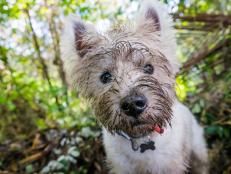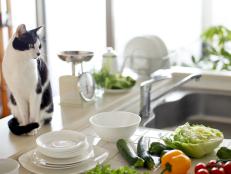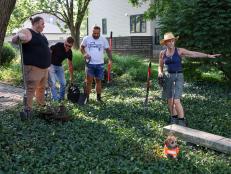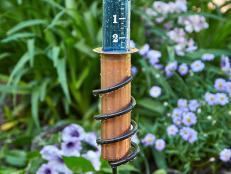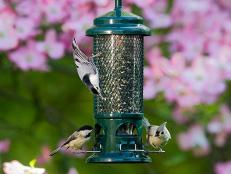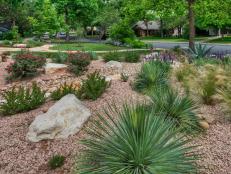Give Your Pup the Sensory Garden of His Doggo Dreams
We bet you and your dog have a lot in common, including your love of the great outdoors! Enhance your pooch's outdoor experience with a sensory garden designed with him in mind.

Yelling at your dog to get out of the garden is so last decade. Building a garden especially for your dog is the new thing. It’s called a pet sensory garden, or an enrichment garden, and you fill it with plants and features that spark your fur baby’s canine instincts.
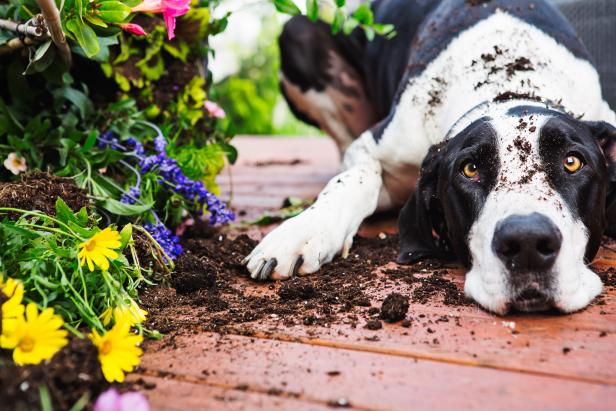
iStock/ChristopherBernard
A sensory garden appeals to a dog’s strongest sense: smell. Scientists estimate a dog’s nose to be tens of thousands of times more sensitive to odor than ours. If their eyes were as strong as their noses, what a human can see at a third of a mile, a dog could see more than 3,000 miles away. And the part of their brain that’s devoted to analyzing those smells is, proportionally, 40 times greater than ours. So get a dog sniffing, and you get his mind working.
“Each smell is like reading a different book for a dog,” says Dr. Julie Albright, assistant professor of veterinary behavior and the PetSafe Chair of Small Animal Behavioral Research at the University of Tennessee Vet School. So look at enrichment garden as building a library for your dog.

iStock/Capuski
Enrichment gardens got their start at animal shelters looking for ways to de-stress dogs who were cooped up in kennels. Steve Hill, an animal behaviorist at the Bath Cats and Dogs Home, had noticed how fascinated his own dogs were with his herb garden, sniffing and sometimes eating the plants. So he built a sensory garden for the dogs at the shelter and filled it with plants known to have medicinal properties, like chamomile and rosemary. He included a muddy area for the dogs to walk in and a sand pit for dogs to dig in. Hill began letting the shelter dogs loose in the garden, and the results were immediate. “Nervous dogs would explore the garden, and you could see them calm down. Timid dogs would get more confident and play and explore more,” he says.
Science backs up Hill’s observations. Researchers at Queens University Belfast found that dogs exposed to the scent of lavender and chamomile oils spent more time quiet and resting, while dogs exposed to rosemary and peppermint pepped up, playing and barking more. Scent investigation, as it’s called, makes a dog happier and healthier.

iStock/alexei_tm
You can make an enrichment garden in your yard, giving your pup a place to get his ya yas out. “Providing a place for them to exercise and explore is especially good for animals who are home alone all day and cooped up indoors,” Albright says.
Hill, who now designs pet sensory gardens fulltime, says he chooses plants dogs can sniff or eat. “I also use sound, touch and sight — lots of different textures and different things to interact with,” he says. If your yard is tiny, even putting out a few potted plants and a small fountain will enrich your pup’s environment.
Here are Hill and Albright’s suggestions for a backyard enrichment garden:
Plants

Courtesy of Mayhew Rescue Centre
Put some plants in pots that you can move around, or dig up one set of plants to replace with another type. This keeps the space surprising and fresh, Albright says. Otherwise, a pup can get bored. And remember: The plants may get trashed and need replacing as your dog engages with them, but that’s the point. Some good ones to include:
- Chamomile and lavender calm a dog who sniffs the plants. Dogs can also eat the plants and get the same effect.
- Rosemary and mint energize a dog who sniffs the plants. Bonus: If they eat the mint, their breath will smell better.
- Barley grass aids in digestion. Dogs eat grass when their tummies hurt. They’re self-medicating, a tendency among animals that’s known by the fancy term, "zoopharmacognosy." Barley grass, packed with nutrients and minerals, is a good variety to plant to satisfy your doggo's urge to use nature as a medicine cabinet.
Textures

Courtesy of Mayhew Rescue Centre
“Different and interactive textures get them thinking about where they're putting their feet and what they’re doing," Hill says. Here are some ideas:
- Ornamental grasses, such as eyelash grass or pine muhly, are good choices. Or you can leave a patch of your lawn unmowed so your dog can be tickled by long, unruly grass.
- Cedar chip paths feel good beneath their feet and can repeal fleas.
- A bed of hay brings new welcome scents. Just be sure to replace it periodically. You can use the old hay as mulch.
Activities

Courtesy of Mayhew Rescue Centre
“The research on how physical exercise decreases cognitive decline is stunning,” Albright says. In other words, getting your dog to move his body will keep his brain sharp. Here are some ways to inspire your fur kid to get up and work:
- Tiered levels: Build raised areas in your yard that your dog can climb on, to encourage them to move around and get some exercise.
- Digging pit: Make a sand pit they can dig in. “It increases their play options,” Hill says.
- Water feature: This is an especially good idea for water-loving dogs like labs. Fill a kiddie pool with water they can splash around in. Add a bubbler or a pond fountain to create running water to stimulate their interest.
- Trail: Make a path that winds all through the garden to encourage your dog to explore.
- Hollow log: Drill holes in a log, and put dog-friendly essential oils in them, or hide toys or treats in them.
- Bird feeder: Albright keeps her bird dog entertained by attracting feathered creatures and squirrels to her yard with a feeder. “He loves flushing them out of the bushes,” she says. The feeder hangs at the edge of the fence so the birds and squirrels can eat and escape unharmed.

Courtesy of Mayhew Rescue Centre
Consider your dog’s personality when you create a sensory garden. “Look at your pet as an individual, and decide what they need,” says Albright. “If they’re really hyper, attracting birds for them to bark at isn’t the way to go.”
And one very important point: A sensory garden alone won’t keep your dog from getting bored. There’s still no better sensory experience for your dog than taking him for a daily walk. A garden should add to your dog’s life, not be his entire world.
The Mayhew dog rescue in London has a sensory garden for its dogs. They let pups roam the garden and sniff or eat the plants, relying on the dog using his instincts to use the plant as they need it. These are some of the plants in the garden. Note: Medicinal herbs are not a substitute for vet care. They’re an adjunct. Some dogs may be sensitive to certain plants, so you should always monitor your dog and check with a vet before exposing your pet to any new plants. For a list of toxic and non-toxic plants for dogs, consult this list from the ASPCA.









